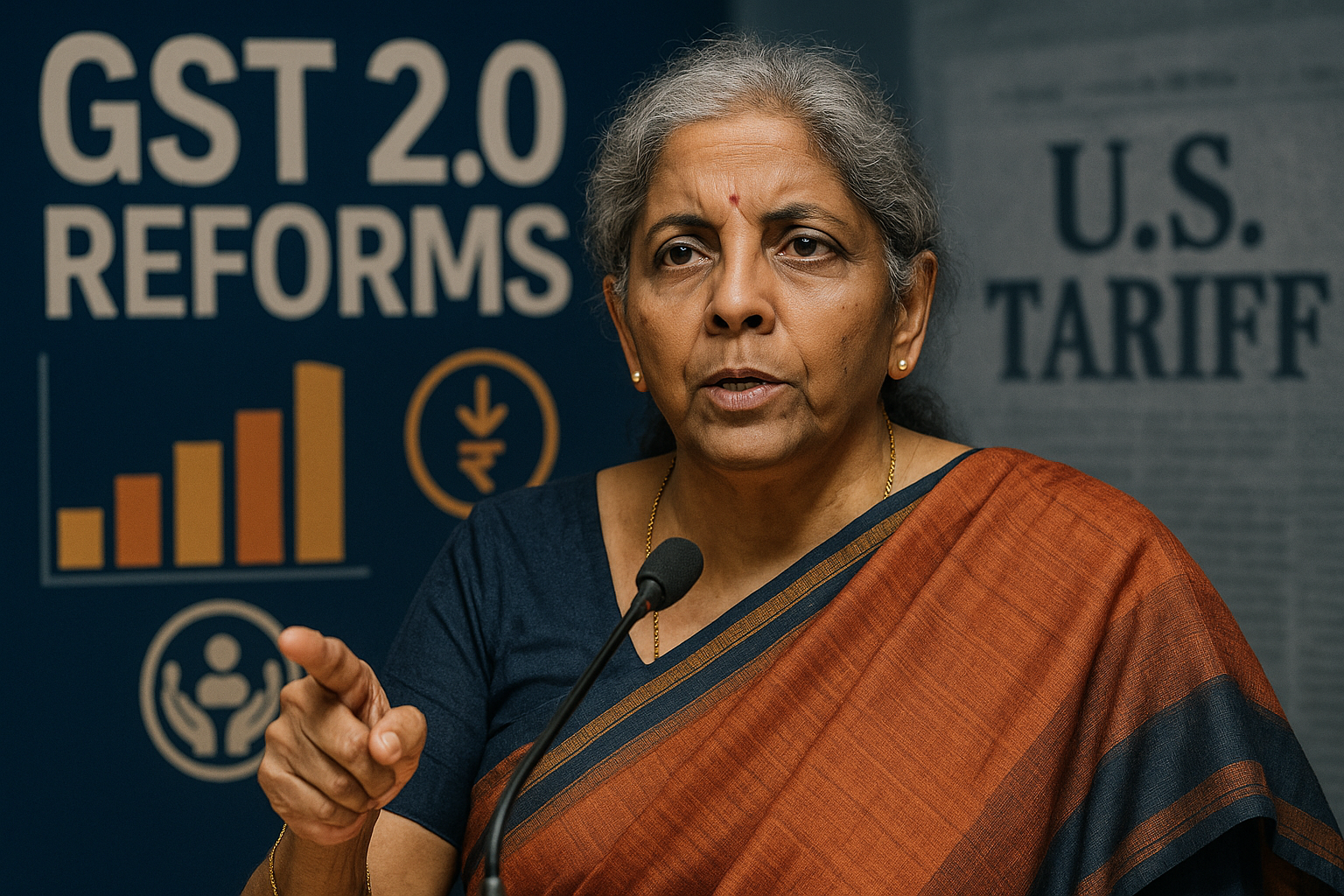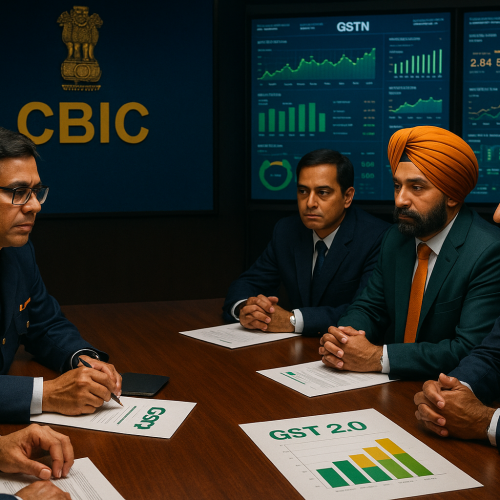Finance Minister Nirmala Sitharaman has clarified that the recently announced GST reforms under GST 2.0 are not linked to the U.S. tariff measures imposed by the Trump administration. She emphasized that the reforms are the result of domestic economic priorities, aimed at simplifying compliance, reducing consumer burden, and supporting long-term growth.
The statement seeks to dispel speculation that India’s GST overhaul was a reactionary measure to offset trade pressures from steep tariffs on Indian exports.
Core Development
Sitharaman highlighted that the GST rationalization and slab restructuring had been under discussion within the GST Council and GoM (Group of Ministers) well before the tariff shocks. The reforms, she noted, reflect:
Domestic Growth Strategy: Enhancing affordability and consumption.
Compliance Simplification: Reducing litigation and classification disputes.
State Consensus: Final structure shaped after broad consultation with opposition-ruled states.
She reiterated that the government remains focused on policy stability, independent of global tariff headwinds.
Key Drivers Behind the Reform
Affordability: Lower GST rates on essentials to ease household budgets.
Ease of Doing Business: Simplified slabs and compliance for industry.
Fiscal Prudence: Balancing revenue with economic stimulus.
Stakeholder Impact
Consumers: Relief on daily-use items through lower GST burden.
Businesses: Reduced complexity and improved compliance environment.
Government: Reinforces credibility of reforms as part of India’s long-term tax agenda.
Industry & Policy Reactions
Economists welcomed Sitharaman’s clarification, stating it underscores India’s autonomy in economic policymaking. Industry associations added that clarity on GST 2.0’s independent intent strengthens confidence among domestic and foreign investors.
Challenges Ahead
Global Context: While unrelated to tariffs, trade disruptions may still affect revenue collections.
Implementation Risks: Businesses need time to adjust to GSTN upgrades.
Revenue Balance: Ensuring reforms do not create a short-term fiscal gap.
Strategic Outlook
The clarification positions GST 2.0 as a domestic reform milestone, insulated from external shocks. By emphasizing affordability and transparency, India projects policy stability, reinforcing its credibility as a reform-driven economy.
Why This Matters
Linking GST reforms to tariffs would suggest reactive policymaking. Sitharaman’s statement assures stakeholders that India’s tax reforms are strategic, homegrown, and forward-looking, not contingent on global trade disputes.












